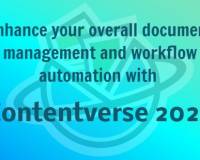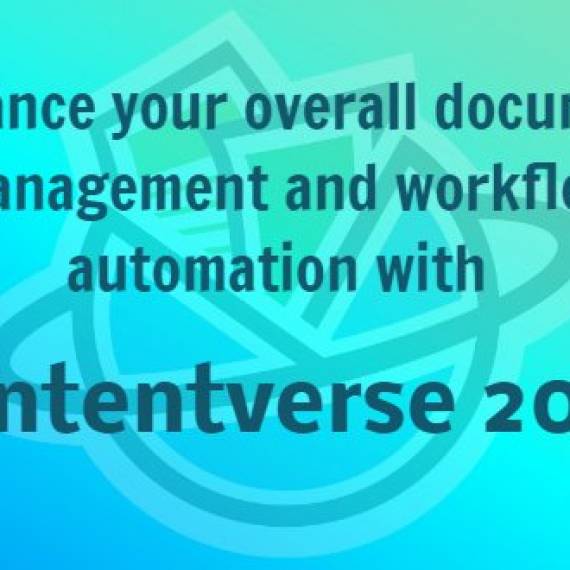There’s no doubt that augmenting, or in some cases, replacing, physical filing cabinets with an enterprise document management system can deliver a ton of benefit from an efficiency standpoint. But in order to wring the most out of document management, organizations should take the next step and automate document-centric business processes with the goal towards fully maximizing ROI.
Organizations have certainly made major strides implementing document management, but a recent report by the Association for Information and Image Management shows that there’s plenty of room for improvement. The report, ECM at a Crossroads, found that 40% of enterprises still lack confidence in their digital files, specifically struggling with the accessibility, accuracy, and trustworthiness. Of the 538 respondents to the AIIM survey, only 18% have implemented a company wide ECM, although 36% said they were working towards some type of centralized solution.
With companies still struggling with the basics such as breaking down information silos and centralizing documents in document management software, it’s no surprise that more advanced capabilities in the area of workflow and automation have been relegated to the back burner. Yet this is an area where experts say organizations can expect to see the most bang for their buck when it comes to a document management deployment.
Consider a May 2013 survey by Forrester Research, which revealed that 44% of document management professionals were unable to quantify the ROI for their document management projects. Yet of those that could measure ROI, most attributed benefits to document management solutions that automated processes and created dynamic workflows, eliminating the bottleneck of paperwork.
Workflow’s Productivity Boost
Today, most document management tools have or are starting to offer automation and workflow capabilities. Therefore, organizations need to have a keen understanding of how those capabilities can enhance the value proposition of document management software, ensuring they’re not simply trading up underutilized physical file cabinets for their digital counterparts.
The concept of workflow in document management is pretty straightforward: It is designed to replace the manual steps involved in managing and routing documents with an automated process, ensuring consistency, boosting productivity, and eliminating bottlenecks. A document management workflow could be anything from automating how documents are entered into a document management system—for example, through scanning or via uploads—as well as for routing content through various departments and hierarchy of management for business tasks involving some sort of approval, review, or editing.
Typical tasks that could be automated via a document management workflow include approving and editing press releases, policy document updates, contract approvals, HR paperwork, and e-signatures. The idea is that the workflow can automate predictable, repeatable processes, ensuring documents are routed to the proper individuals, that agreed-on thresholds for approval are met, and documents are escalated up the proper chain of command without requiring human intervention. When done right, this kind of automation reduces errors, bolsters productivity, and vastly reduces the burden of administrative paperwork.
Given the importance of workflow to the overall document management use case, organizations should make it a key criteria when evaluating document management systems. Look for platforms that make it easy to set up rules for routing documents and for modeling core business processes, such as Contentverse. Drag and drop functionality and easy-to-navigate portal architectures will encourage users to take advantage of sophisticated workflow functionality more so than document management systems that require programming or complex modeling of common business processes.
Smaller and less sophisticated organizations will also benefit from document management platforms that have out-of-the-box workflow and automation functionality specific to document management as opposed to relying on platforms that leverage auxiliary business process management (BPM) tools as part of broader, cross-system workflow.
While it’s important for organizations to master document management basics, workflow and automation are critical components of document management success. Understanding core business processes and choosing a platform where workflow is a natural extension, not a complex add-on, can go a long way in securing a pivotal role for document management in the enterprise.
About the Author:

















Leave a Comment